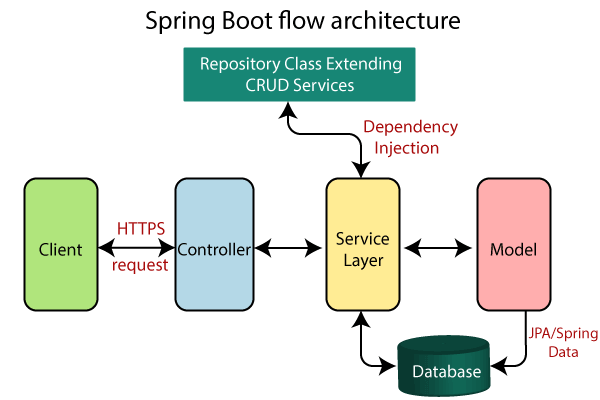Spring Boot Architecture and Workflow
The aim of Spring Boot is to completely remove the usage of XML-based and annotation-based settings in the software. This article reviews the architecture and workflow.
Join the DZone community and get the full member experience.
Join For FreeSpring Publishing is a sophisticated variant or job from the Spring framework. Together with the Spring framework, in addition, it is made up of third-party libraries and Embedded HTTP servers. It easily produces production-grade, more time-consuming, and standalone applications dependent on the Spring framework.
The goal of Spring Hack would be to completely get rid of the usage of XML-based and annotation-based settings in the software. By default, it provides the majority of the items, like functions, processes, etc.

In this tutorial, we're likely to find out about the design of this Spring Boot framework. The above diagram demonstrates that every layer of this structure is directly communicating with the layer just below or above it due to the workflow. This means every layer only depends upon its adjoining coating, so if we change the API of a single layer, we simply have to upgrade the layers alongside it.
A short description of these layers is provided below:
- Display Layer: It's the front layer or upper layer of this structure, as it is made up of viewpoints. It's used to interpret the JSON areas to items and vice-versa and handles authentication and HTTP requests. After finishing the authentication, it moves into the business layer for additional processes.
- Business Layer: It manages all of the business logic and performs validation and consent since it's part of business logic. By way of instance, only admins are permitted to alter the consumer's account.
- Persistence Layer: It comprises all of the storage logic, such as database questions of this program. Additionally, it translates the company items from and to database rows.
- Database Layer: It could include many databases. The execution of the aforementioned layered structure is performed in this way: The HTTP request or internet requests are managed by the Controllers from the demonstration layer, the providers control the company logic, as well as also the repositories handle persistence (storage logic). A control can manage numerous providers, a service may manage many repositories, and also a repository may manage many databases.
The Spring Boot architecture relies on the Spring framework. So, it largely uses all of the features and modules of Spring-like Spring MVC, Spring Core, etc., but there isn't any demand for your DAO and DAOImpl classes.

The next diagram shows the workflow of Spring Publishing. Additionally, it requires the support logic if necessary. The company logic is done from the support layer, as well as the logic is done on the information in the database that's mapped together with the model or thing course through JPA. A JSP page is returned as a reply to the customer if no error has happened.
Opinions expressed by DZone contributors are their own.

Comments